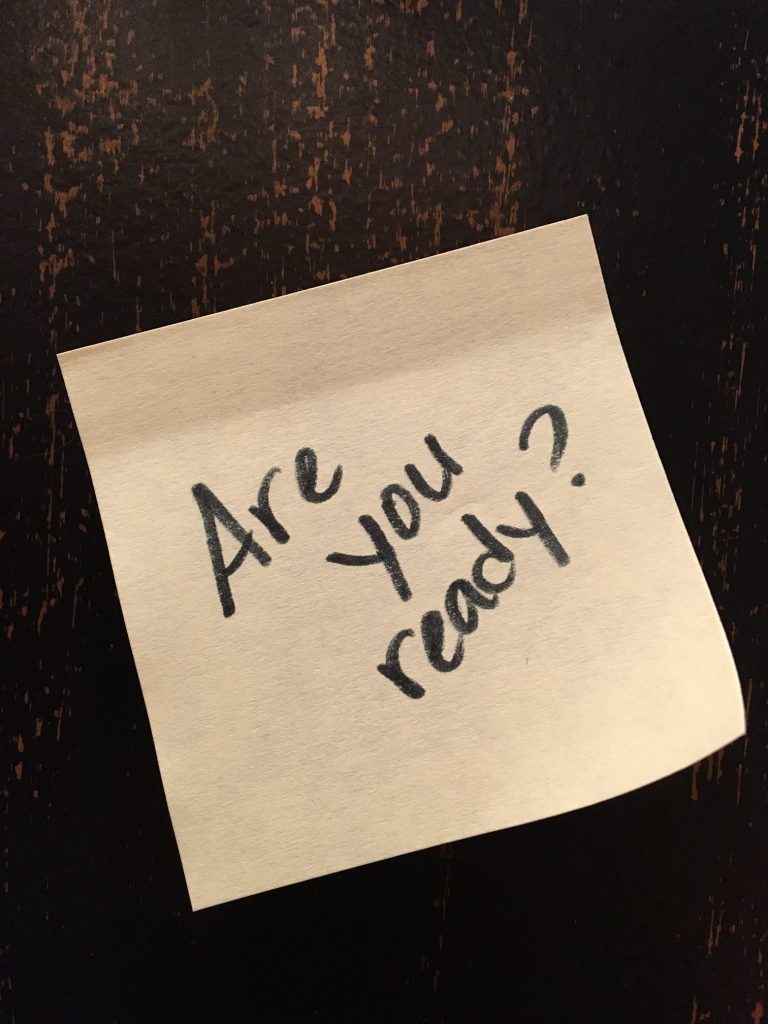
Jul 19, 2016 | Leadership, Transition & Change

In 2011, the Meyer Foundation and CompassPoint Nonprofit Services produced a research report “Daring to Lead” that surveyed 3,000 nonprofit executive directors and revealed a forecast of significant impending workplace transitions, with 67% of executives reporting that they expect to leave their jobs over the next five years.
Today, while we see many leadership transitions occurring among the Baby Boomer population, “what was once characterized as a pipeline problem can now be described as a bottleneck, as many individuals are choosing to work beyond the traditional retirement age due to a variety of reasons, including a prolonged economic recession,” reports the William and Flora Hewlett Foundation in “Moving Arts Leadership Forward.”
This reality requires organizations to examine its greatest asset – its people, their roles, and career paths – in strategic and creative ways. Workplaces can expect a robust boomer presence through at least 2034, when the youngest boomers will turn 70. This reality impacts Gen X-ers and Millennials aspiring to executive positions, where the wait time for succession is often longer than they would like.
While there was once a question of whether there were enough capable professionals to succeed an organization, now the challenge is more focused on developing and retaining early- and mid-career professionals in an environment of limited opportunities for formal advancement.
While not alone, nonprofits as a sector have considerable challenges in addressing this leadership reality, as they:
– Tend to be small-to-medium size operations and, as a result, are not likely to have as many resources to address strategy, planning, and leadership development.
– Are often institutions with a culture of group decision making, where business gets done through committees and boards of directors – a process that can create added delays and complexity.
– Can be highly funder-dependent, and any transition – especially with an organization’s top leadership – can threaten these vital relationships and the very future of the organization itself.
– Frequently are lead by an original founder or long-time executive. Over time, the top leader and the organization itself are inextricably connected. When this leader goes away, so could the organization.
– Often do not have sufficient reserves (if any at all) to weather an economic downturn, exposing the organization to significant financial vulnerabilities. Leadership transitions and professional development of its people, if not handled properly, can further intensify this situation.
– Sometimes have boards of directors who are unprepared to handle the transition and select and support new leaders. Despite over a decade of attention to this issue, executives and boards are still reluctant to talk proactively about succession, with just 17% reporting that their organizations had a written succession plan.
We must not overlook these pivotal leadership priorities for the development opportunities that they are. Properly and proactively managed, these changes and transitions provide an organization a period to pause, reflect, regroup, and focus. It’s a unique opportunity to examine strategic direction, priorities, and chart a future course. The key is not merely to endure it, but to emerge stronger and more dynamic from it.
You may be interested in these related blog posts:
Executive Leadership Transition and Organization Preparedness
Succession Planning: Conversation Avoided
 About Jeanie Duncan: Jeanie is President of Raven Consulting Group, a business she founded that focuses on organizational change and leadership development in the nonprofit sector. She is a senior consultant for Raffa, a national firm working with nonprofit clients to lead efforts in sustainability and succession planning, executive transition and search. Additionally, Jeanie serves as adjunct faculty for the Center for Creative Leadership, a top-ranked, global provider of executive leadership education.
About Jeanie Duncan: Jeanie is President of Raven Consulting Group, a business she founded that focuses on organizational change and leadership development in the nonprofit sector. She is a senior consultant for Raffa, a national firm working with nonprofit clients to lead efforts in sustainability and succession planning, executive transition and search. Additionally, Jeanie serves as adjunct faculty for the Center for Creative Leadership, a top-ranked, global provider of executive leadership education.

Jun 17, 2016 | Transition & Change

In 2011, the Meyer Foundation and CompassPoint Nonprofit Services produced a research report “Daring to Lead” that surveyed 3,000 nonprofit executive directors and revealed a forecast of significant impending workplace transitions, with 67% of executives reporting that they expect to leave their jobs over the next five years.
Today, while we see many leadership transitions occurring among the Baby Boomer population, “what was once characterized as a pipeline problem can now be described as a bottleneck, as many individuals are choosing to work beyond the traditional retirement age due to a variety of reasons, including a prolonged economic recession,” reports the William and Flora Hewlett Foundation in “Moving Arts Leadership Forward.”
This reality requires organizations to examine its greatest asset – its people, their roles, and career paths – in strategic and creative ways. Workplaces can expect a robust boomer presence through at least 2034, when the youngest boomers will turn 70. This reality impacts Gen X-ers and Millennials aspiring to executive positions, where the wait time for succession is often longer than they would like.
While there was once a question of whether there were enough capable professionals to succeed an organization, now the challenge is more focused on developing and retaining early- and mid-career professionals in an environment of limited opportunities for formal advancement.
Obviously transitions raise a long list of issues that point to the complexity and difficulty of such pivotal moments. While there are no simple solutions, changes in leadership can be addressed positively and proactively and strengthen the organization as a result.
– At a minimum, an organization should have an emergency transition/succession plan if an Executive Director is suddenly unable to perform his or her duties. Many boards of directors are underprepared to handle the transition and selection and support of new leaders, with just 17% reporting that their organizations have a written succession plan (per Daring to Lead 2011).
– Often, nonprofit institutions have a culture of group decision-making – a process that can be complex and create delays. A board can address this issue in its bylaws, empowering a small representative group (executive or personnel committee, for example) to act on its behalf – in situations like this and others.
– Have written job descriptions and a performance evaluation system in place for all staff. This is especially critical for the Executive Director position. Board leadership should have familiarity of the Executive’s core role and functions and how well the individual is performing against agreed upon goals.
– Institute a culture of ongoing cross training among staff, whereby individuals have a clear understanding of one another’s responsibilities – especially among the leadership team.
– If possible, an organization’s key donor relationships should be shared by the Executive Director and other members of the staff and board. This helps lessen vulnerability, share fund raising responsibility, and ensure that vital donor relationships are held with the organization and not exclusively with a particular leader.
– Nonprofit groups often do not have sufficient reserves to weather significant challenges, exposing the organization to financial vulnerabilities. Leadership transitions, if not handled properly, can intensify this situation. However, advanced planning and good management allows even the smallest organizations to build a few months’ operating reserve.
These strategies are critical to developing leaders and preparing for both short- and long-term transitions. In the case of a longer-term planned departure, these actions can be coupled with broader assessment and planning, presenting an organization with a unique opportunity to examine strategic direction, priorities, and chart a future course. The key is not merely to endure transitions, but to emerge stronger and more dynamic from it.
You may also be interested in these related blog posts:
Succession Planning: Conversation Avoided
Challenges to Addressing Leadership Transitions
 About Jeanie Duncan: Jeanie is President of Raven Consulting Group, a business she founded that focuses on organizational change and leadership development in the nonprofit sector. She is a senior consultant for Raffa, a national firm working with nonprofit clients to lead efforts in sustainability and succession planning, executive transition and search. Additionally, Jeanie serves as adjunct faculty for the Center for Creative Leadership, a top-ranked, global provider of executive leadership education.
About Jeanie Duncan: Jeanie is President of Raven Consulting Group, a business she founded that focuses on organizational change and leadership development in the nonprofit sector. She is a senior consultant for Raffa, a national firm working with nonprofit clients to lead efforts in sustainability and succession planning, executive transition and search. Additionally, Jeanie serves as adjunct faculty for the Center for Creative Leadership, a top-ranked, global provider of executive leadership education.

Sep 2, 2014 | Intention
I remember elementary school and “field day” each year in the late spring. I looked forward to it with great anticipation. We’d have team relay races – three-legged, potato sack, egg-and-spoon – and then the best event of all…tug of war.

We’d grab the rope with our sweaty fists, grit our teeth, dig our heels in, and go to it. Tugging ferociously to and fro, sometimes the battle was quickly won and other times it seemed to go on forever until one team succumbed to the other, often getting drug to the dusty ground and across the line.
I may have liked this challenge on the playground, but it certainly is not the experience I want coming alive in my real life. Yet, sometimes it happens – mostly when I’m torn between competing priorities of work, family, community, and self. I feel “up against it” trying to manage and balance the many priorities and expectations.
Much like Elizabeth – the nonprofit executive portrayed in the attached article “Yes, You CAN Balance Work and Family Roles” – I experience the tension between consuming work responsibilities and my other life roles. This was especially true for me while serving in various leadership roles in the nonprofit sector, most recently as President & CEO of an arts council.
Early on in that position, I didn’t know any other way to be than “always on.” I thought, “If I’m not thinking about the organization, who is?” I constantly assessed, planned, strategized, and engaged my team and stakeholders. I knew the importance and necessity of being the face of the organization, a presence at local arts and cultural events during evenings and weekends, and “at the table” with other critical community leaders.
At home, I had a 4-year-old son, a spouse with an equally demanding career, and aging parents that needed my increasing attention and support. For years, I served in this complex and demanding role, often recalling the field day memories of tugging to meet all the demands while aiming for balance among my life’s personal and professional interplay.
Nearly a decade later, I completed my tenure with the organization. Between leaving that post and starting my own business, I decided to take a sabbatical. I wanted to clear my head, explore creative pursuits, and allow myself the space and time to renew my energy, be with friends and family, and shape what would come next.
During this time off, I learned that, while successful, the way in which I led was not a sustainable practice. Going forward, I committed to living a more realistic pace, adjusting my expectations of myself (and others), and more fully honoring my core values.

Courtney Welch, Inspired by Movement
For me, work-life balance is more about creating and managing flow than literally attempting to divide up and assign the number of hours in a day to the important activities of life. If something I’m doing has positive impact and gives me energy, then I have this sense of resonance and ease – regardless of the actual hours I’ve spent doing it. My life feels aligned, or “in balance.” This allows me to channel that energy into taking care of what’s important to me – both at work and outside of work.
Finding a workable approach to life is critical and can benefit your well-being, relationships, and the organization you serve. This article – “Yes, You CAN Balance Work and Family Roles” – offers five steps that can help you start today to create a more fulfilling life for yourself. We’d love to hear what’s working for you to create work-life balance.
Read other related blog posts:
I Got This! Creating a Life of Choice, Resonance, and Flow
 About Jeanie Duncan: Jeanie is President of Raven Consulting Group, a business she founded that focuses on organizational change and leadership development in the nonprofit sector. She is a senior consultant for Raffa, a national firm working with nonprofit clients to lead efforts in sustainability and succession planning, executive transition and search. Additionally, Jeanie serves as adjunct faculty for the Center for Creative Leadership, a top-ranked, global provider of executive leadership education.
About Jeanie Duncan: Jeanie is President of Raven Consulting Group, a business she founded that focuses on organizational change and leadership development in the nonprofit sector. She is a senior consultant for Raffa, a national firm working with nonprofit clients to lead efforts in sustainability and succession planning, executive transition and search. Additionally, Jeanie serves as adjunct faculty for the Center for Creative Leadership, a top-ranked, global provider of executive leadership education.

Apr 14, 2013 | Transition & Change

“There is nothing permanent except change.” – Heraclitus
Change and transition are at the core of my consulting and coaching work with organizations and individuals. I find myself attracted to this constant movement of life. Even when things appear to be steady, they’re continually evolving and becoming. Rather than resist, why not grab hold of that energy and proactively shape what’s becoming? Easier said than done, right?
What I have found is that change – the specific event itself – is not the greatest challenge, although at first it may appear to be. The toughest part is dealing with what comes as a result of that event, the dynamic and complex human elements of transition. It’s not easy letting go of what we’re comfortable with and leaping into the unknown. It can be a place of great uncertainty and trepidation. Makes you want to jump right in, doesn’t it?
Whether you’re the type that repels change or embraces it, below are a few ideas for how to make it a bit more manageable.
1. Make small steps or break up large-scale changes into more manageable increments.
2. Mentally link changes to established daily rituals. This can make changes like beginning a new habit, starting a new job, or adapting to a new home happen with greater ease.
3. Stay flexible, adaptable and ‘go with the flow.’ It can help you accept change instead of resisting it.
4. Look for the good that change brings. An illness, a broken relationship, or the loss of a promotion or job can seem like the end of the world, yet often they’re also gifts in disguise.
5. Reflect on your greatest learnings through the process and apply to future situations.
6. Be prepared for the unexpected during change and transition. While it’s impossible to know everything that will happen in advance, anticipating certain elements will help make the situation less overwhelming.
7. Remember that you’re not alone. Writing or talking about your circumstance with a colleague or friend can give you a sense of relief while helping you navigate through a challenging period.
8. Give yourself time to accept changes that you face, recognizing that you may need time to adjust to your new situation.
9. No matter how large or difficult a change is, you will eventually adapt to your new circumstances. The new that it brings will eventually weave itself into the right places in your life.
10. If you’re trying to change a pattern of behavior or navigate your way through a significant change, don’t assume that it has to be easy. Expressing your feelings and emotions during a period of change is natural. Then again, don’t assume that making a change needs to be hard. Sometimes, changes are meant to be that easy.
“We cannot change anything until we accept it. Condemnation does not liberate, it oppresses.” – Carl Jung
_________
Jeanie is President of Raven Consulting Group, a business she founded that focuses on organizational change and leadership development in the nonprofit sector. She is a senior consultant for TransitionGuides, a national firm working with nonprofit clients to lead efforts in sustainability and succession planning, executive transition and search. Additionally, Jeanie serves as adjunct faculty for the Center for Creative Leadership, a top-ranked, global provider of executive leadership education.

Aug 1, 2012 | Leadership, Strategy
 Some consider visioning to be a fluff exercise rather than an effective personal or business development strategy. After all – in both our personal and business lives – we spend the majority of our time working ‘in it,’ rather than ‘on it.’ However, dedicating time to thinking about the future can be a critical investment that reaps big rewards. How do I know that? I have proven it for myself and for my clients. In fact, I have found that visioning is 100% smart business practice, helping organizations and individuals within them chart the course, set goals, and measure progress – all of which directly impact the bottom line.
Some consider visioning to be a fluff exercise rather than an effective personal or business development strategy. After all – in both our personal and business lives – we spend the majority of our time working ‘in it,’ rather than ‘on it.’ However, dedicating time to thinking about the future can be a critical investment that reaps big rewards. How do I know that? I have proven it for myself and for my clients. In fact, I have found that visioning is 100% smart business practice, helping organizations and individuals within them chart the course, set goals, and measure progress – all of which directly impact the bottom line.
Two years ago, I gave myself a gift: a 12-month sabbatical. I had recently left a top leadership post as an arts administrator, knowing that I had completed what I set out to do for the organization. But I didn’t quite know what would come next. I needed a little “white space” between completing a very consuming role and beginning my next venture – a little time off to choose activities that helped me think, discover, and refill my creative well.
One day while reading The Law of Attraction by Esther and Jerry Hicks, I came across a visioning exercise called the “creative workshop.” The concept is to spend about 20 minutes each day giving thought to what you want with great clarity, describing and refining a fulfilling picture of yourself – and the life you want to live. (The idea, of course, is that you attract and create that on which you focus.)
Ultimately, that exercise led me to create a two-year vision of the most full, enriching, and satisfying life I could imagine. I then laid out specific actions I’d take to guide me toward my longer-term vision. After all, what good is a vision without a plan to get there?
What I thought initially was a simple (fluffy) exercise ended up having a profound effect (who knew?). It was as if I had sprinkled fairy dust or Miracle Gro® on my life. Each day, I’d re-read and think about my vision and action plan. The phone started to ring, emails arrived, and certain people would simply appear in my day – everywhere from the gas station to the ball field. As if I were a magnet, resources steadily came to me, each of which had a part to play in helping me fulfill my vision.
That was two years ago. Recently, I decided to repeat this “workshop” again for myself, and I am having a similar experience – only this time, my vision seems to have expanded. And once again, I can sense the amazing personal growth beginning to happen.
“We should change our perspective from ‘I’ll believe it when I see it’ to ‘I’ll see it when I believe it.'”
– Chuck Duncan
As individuals, we give so much thought and energy to our work, our co-workers, and to our family and friends that we often forget to invest in ourselves. I observed a sign on a colleague’s desk recently that read, “Me First.” While at first this might seem amusing or even appear egocentric, all of us have to remember that if we don’t first focus on ourselves, we have less to give others.
The same thing happens with organizations: visioning is often put off or lost altogether, with a team’s time and effort immersed in the day-to-day details and priorities. Yet such future-thinking exercises don’t have to be daunting undertakings; they can be incorporated into regular staff or board meetings or be integrated into a periodic planning process. I’ve used a version of this visioning exercise with clients in strategy development, sustainability planning, leadership transitions, and coaching. What I’ve found is that individuals and businesses who roll up their sleeves and take action to do it get great results and rewards.
Visioning, when accompanied by smart planning and consistent focus, can yield true transformation for you and for the organizations you work to improve. Getting started is easier than you think!
- Set aside some uninterrupted time. I suggest an hour, but a few sessions at 20 minutes each also can be effective.
- Pick a point in the future – it can be weeks, months, or years.
- Imagine a life (or business) that is vibrant and fulfilling beyond your greatest expectations.
- Give yourself permission without boundaries to dream and create.
- Describe what you’re imagining in specific, vivid detail.
It may not come easily at first, but with a little time spent – perhaps over a few days/sessions – clarity and details are likely to take shape.
Once the intention is set, give attention to your new vision and plan – and enjoy what begins to manifest itself.
“You get what you think about, whether you want it or not.”
– Jerry Hicks
photo credit: Ross Manges Photography via photopin cc


 About Jeanie Duncan: Jeanie is President of Raven Consulting Group, a business she founded that focuses on organizational change and leadership development in the nonprofit sector. She is a senior consultant for Raffa, a national firm working with nonprofit clients to lead efforts in sustainability and succession planning, executive transition and search. Additionally, Jeanie serves as adjunct faculty for the Center for Creative Leadership, a top-ranked, global provider of executive leadership education.
About Jeanie Duncan: Jeanie is President of Raven Consulting Group, a business she founded that focuses on organizational change and leadership development in the nonprofit sector. She is a senior consultant for Raffa, a national firm working with nonprofit clients to lead efforts in sustainability and succession planning, executive transition and search. Additionally, Jeanie serves as adjunct faculty for the Center for Creative Leadership, a top-ranked, global provider of executive leadership education.










Recent Comments